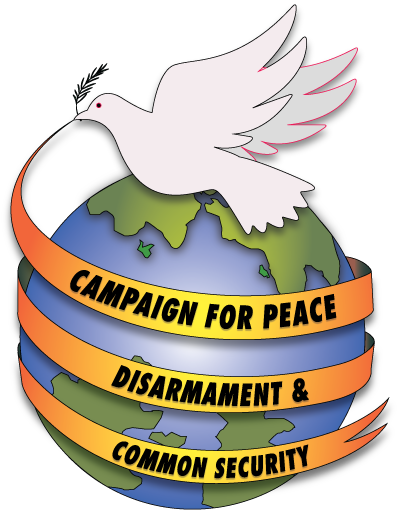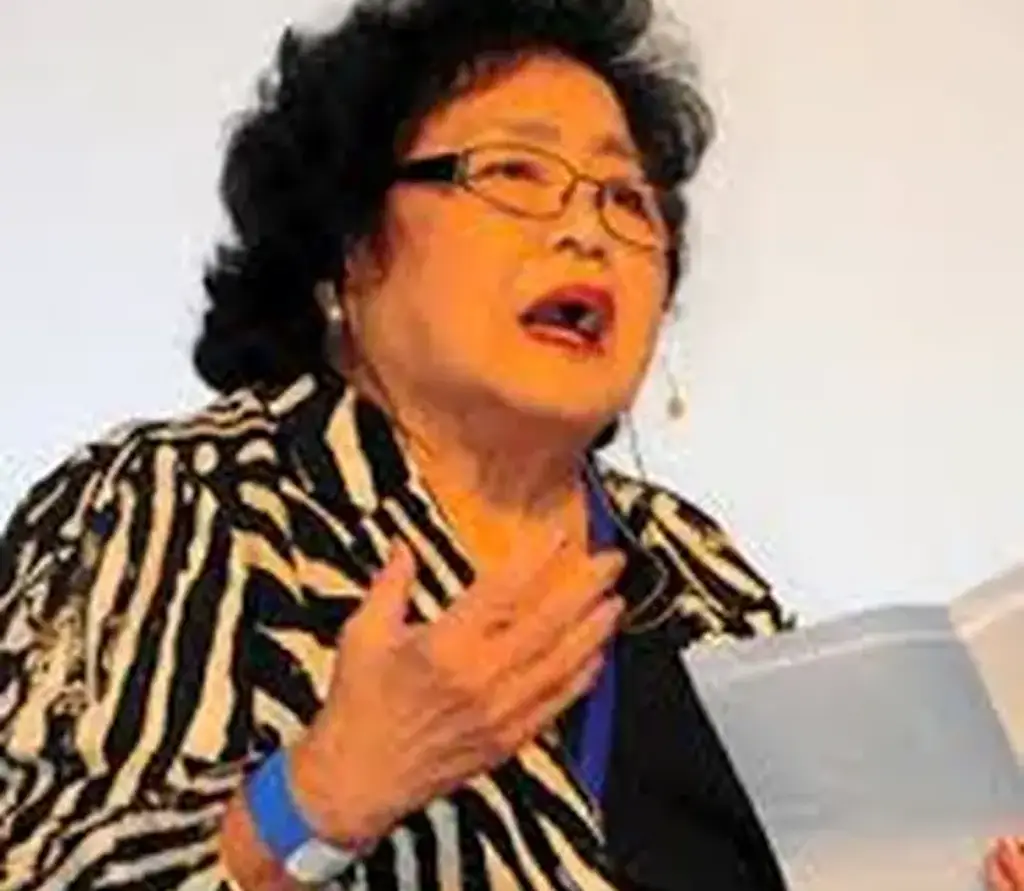Remarks at the NGO session of the 2nd Meeting of States Parties to the Treaty on the Prohibition of Nuclear Weapons,
Public Meeting, November 29, 2023
It is an honour to share some thoughts and reflections with you today, as we continue the hard work of strengthening a treaty we fought so hard to achieve: a treaty, we can say without exaggeration, with the potential to make the difference between life and death on Mother Earth.
As a hibakusha – a 13-year old schoolchild when my hometown of Hiroshima was destroyed in a single, evil flash – my main contribution to our common struggle has been to bear witness to the atomic Hell I saw and miraculously survived.
On January 24, 1946 – as I was trying to piece my young life back together, grieving all the family and friends I had lost – the first United Nations General Assembly resolution was adopted, calling for “the elimination from national armaments of atomic weapons.” Seventy one years later, in July 2017, 122 states adopted the TPNW, finally delivering on that solemn promise and paving the way – though there is still a long way to go – to Global Zero.
I was in the General Assembly at that extraordinary moment, describing it as “the beginning of the end of nuclear weapons,” and beseeching – as I do again today – every world leader to build on that beginning and hasten the end of humanity’s nuclear nightmare.
For seven years – as the Cold War nuclear arms race began – Hiroshima and Nagasaki remained under another cloud: the suffocating silence and censorship of occupation. But after that half-life, many survivors were emotionally and spiritually reborn, recovering their voices and vowing to raise them.
As a teenager, I was inspired by the courage and determination of so many of the adults around me: the teachers, pastors, community leaders, workers and carers who were my models and guides. In 1954, strengthened by their strength, I took their vow with me to North America. Sometimes, I have received a hostile or indifferent reception, from people – some of them still poisoned by wartime hatred of Japan – who did not want to hear, or who refused to care, about Hiroshima and Nagasaki. But I have also been inspired by countless Americans who do care; who have grasped the nature of the nuclear threat; who have done everything they can to ‘give peace a chance.’
I think for example of the brave acts of non-violent civil disobedience by Catholic Plowshares activists at nuclear weapons factories and bases around this country. Some ‘big names’ stood in solidarity with them – as did I – seeking unsuccessfully to speak as witnesses in their trials. The historian Howard Zinn was one: the late Daniel Ellsberg was another. And I know that they – like me – felt nothing but humble admiration for the protesters, who were often harshly treated and jailed. They sacrificed their freedom for the sake of human freedom from nuclear fear. But, as Howard Zinn liked to say, they also acted to defend democracy, the rights and freedoms eroded by the violences – and the silences – of the nuclear war state that America has so tragically become.
And here I would like to pause and ask, how did it happen? That this great country – a force for good in so many ways, and so admired for so many achievements – has spent so much time and money building an enormous ‘Empire of the Bomb’? The answer, I believe, lies in the lies that most of America continues to tell itself about Hiroshima and Nagasaki: a state of denial that has created a terrible moral vacuum, both at home and abroad.
Thank heavens, then, for all those activists – those extraordinary ‘ordinary people’ – who are prepared to face and tell the truth, the unsung heroes who form the beating heart of the anti-nuclear movement. Over the years, for example, I have had occasion to applaud New York City Council. When, in 1983, it declared itself a Nuclear-Weapon-Free Zone. More recently, in 2021, Resolution 976 was adopted which instructs NYC’s Comptroller to divest its pension funds from nuclear weapon producers. Local activists continue to advocate for the implementation of this New York City law. That is tremendous: but it wouldn’t have happened without the hard, thankless labour of campaigners who refused to take ‘No’ for an answer.
The favourite part of my survivor’s journey has been meeting young people in high schools, colleges and universities in many countries around the world. In this city, talks by survivors have been organized by Hibakusha Stories, a programme run by Youth Arts New York since 2008, opening the eyes and minds of over 50,000 students to the reality of nuclear weapons and the imperative of nuclear disarmament.
But while I always found a receptive audience in classrooms and on campuses, for decades we survivors remained out in the cold, confined to the margins of disarmament diplomacy. We hoped that that might change back in 1995, at the Review and Extension Conference of the nuclear Non-Proliferation Treaty. We had already waited in vain since 1970 for the treaty’s nuclear-armed states, the P5, to honour their side of the NPT’s ‘grand bargain’ and disarm. In 1995, they requested an indefinite extension of the treaty, assuring non-nuclear states that, with the Cold War now over, they would definitely do the right thing.
The extension was granted, coupled with new commitments by the P5 that were further reinforced at the NPT Review Conferences in 2000 and 2010. But by then, it was crystal clear that promises to disarm were again being broken. True, in 2009 President Obama had raised our hopes by declaring that as the only country “to have used a nuclear weapon,” the United States had “a moral responsibility to seek the peace and security of a world without nuclear weapons.” Yet those words soon rang hollow, as his Administration embarked on a trillion-dollar ‘modernization’ of its arsenal!
So in 2010, NPT states expressed “deep concern at the catastrophic humanitarian consequences of any use of nuclear weapons.” That may now sound obvious and undramatic, but in fact it was unprecedented, signalling a paradigm shift from national to human security. And that shift led to the ‘Humanitarian Initiative,’ which led to the ‘Humanitarian Pledge’ to work for a new ban treaty, which led to the negotiations that produced our beloved TPNW in 2017, the year ICAN received the Nobel Peace Prize, just ten years after it was founded!
It was nothing short of a diplomatic and political revolution! And at the human heart of it all were the survivors of inhuman nuclear violence: the two atomic bombings, and the more than two thousand nuclear tests. I think today, for example, of the late Taniguchi Sumiteru, known as the ‘Postman of Nagasaki,’ whose horribly burned back became a symbol of atomic atrocity. At the 2015 NPT Review Conference, I spoke alongside Mr. Taniguchi, both of us so excited by the Humanitarian Initiative, both of us so proud of each and every survivor who had refused, even in the political wilderness, to quit.
Of course, there are still setbacks in our struggle. Earlier this year, I was in Hiroshima during the G7 leaders’ summit. And how infuriated many of us hibakusha were at the lack of leadership on display, culminating in a so-called ‘Hiroshima Vision on Nuclear Disarmament’ which not only failed to mention the TPNW but declared that nuclear weapons “deter aggression and prevent war,” a demonstrably false claim that I described as “blasphemy” against the spirit of the place – the Peace Memorial Park in Hiroshima – where those sleepwalking politicians were gathered.
The fiasco of the G7 summit tells us all we need to know about the challenges ahead. But while we need to work hard to support and strengthen the TPNW, we should also continue to celebrate it. Not in order to pat ourselves on the back, but to inspire confidence in others, particularly young people, that paradigms can shift: that rapid, positive progress is possible.
Such hope and optimism is hard to sustain at this desperate moment in world affairs, with a nuclear-armed bully – Russia – causing death and destruction in Ukraine, and another nuclear-armed power – Israel – responding to war crimes by Hamas with war crimes of its own, killing thousands of civilians, mainly women and children, in the Gaza Strip. When I look at these daily scenes of desolation and despair, growing wastelands of rubble and corpses, I cannot help but think back to my young self, pinned alive under blazing ruins, with my schoolmates crying and burning to death around me. And when I see people digging with their bare, bleeding hands in case anyone somehow survived, I am transported back to the moment I felt a stranger’s kind hand on my shoulder, his voice urging me: “Don’t give up! Keep moving! Keep pushing! I am trying to free you. See the light coming through that opening? Crawl toward it…”
It is hard and lonely sometimes, but we have to keep believing we can win our war against war. And with the TPNW, we have given ourselves a real chance of success: we have lit a bright new beacon, creating an opening leading to not just a safer but a better world.
My ‘humanitarian pledge’ to you is that I will keep crawling, keep pushing to the last breath in my frail body. But more importantly, I know that collectively, we will support each other on our journeys and in our darkest days. Alone, we may stumble: but together, we shall not be moved.

